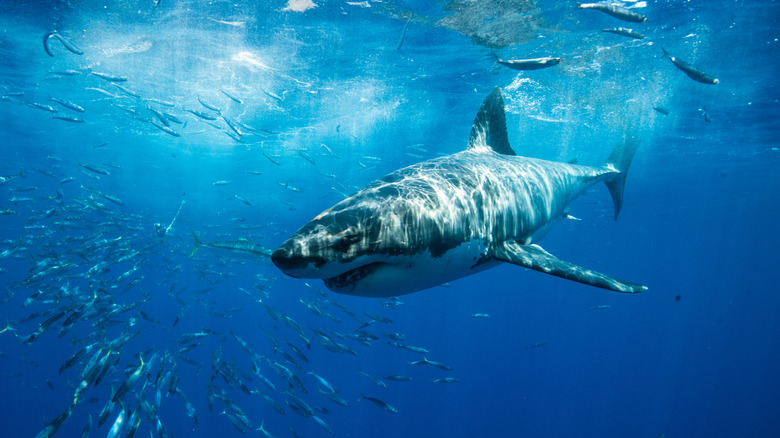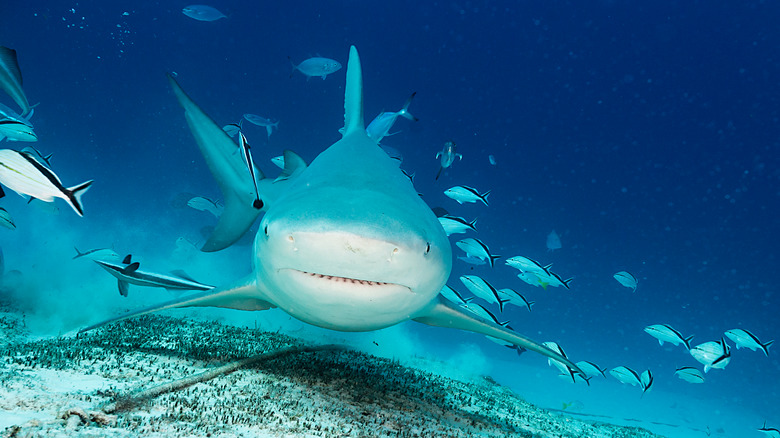The Real Reason Sharks Hunt At Different Times
Dawn and dusk have been considered the prime feeding times for sharks, but a new study shows that the dining habits of these predators may be more complicated than that. Researchers from Murdoch University, the New England Aquarium, and Mote Marine Laboratory have found that different shark species have distinct feeding times (via Phys). They tagged and followed the movements of 172 sharks from six species found in the Gulf of Mexico in their study, which was published in Proceedings of the Royal Society B.
Not surprisingly, the largest species ate whenever they liked while other shark species were more strategic in their dining times. "It looks like the bigger sharks — the tiger sharks — have their time and no one interferes with it, " Georgia Jones of Bournemouth University told New Scientist. "Then smaller species like the blacktips will work around the times so they're not co-occurring with the tiger sharks." In the hunt for prey, tiger sharks have the advantage over the blacktips because of their size. Tiger sharks can be up to 14 feet long and up to 1,400 pounds, according to National Geographic. Blacktips are much smaller, only reaching about 8 feet in length and a maximum of 220 pounds.
Smaller sharks avoid bigger sharks at feeding time
Overall, the researchers collected 3,766 hours of data and noticed how the sharks divided up the day (via Phys). Bull sharks preferred the early morning for feeding while sandbar sharks were more active in the afternoons. Blacktips, scalloped hammerheads, and great hammerheads were the night owls of the groups studied. Like the blacktips, scalloped hammerheads are on the smaller side, spanning up to 14 feet in length and weighing up to 350 pounds (via the Monterey Bay Aquarium). Great hammerheads are the largest kind of hammerhead shark, growing up to 20 feet in length and 991 pounds, according to Oceana. No matter what their size, these sharks seem to be looking to avoid the tiger sharks.
Could this recently discovered behavior of the sharks in the Gulf of Mexico be occurring in other aquatic ecosystems? "This could be more common than we think," said Karissa Lear, a researcher involved in the study (via BBC). "Marine ecosystems haven't been widely studied in this way because tracking and observing underwater animals can be more difficult."

